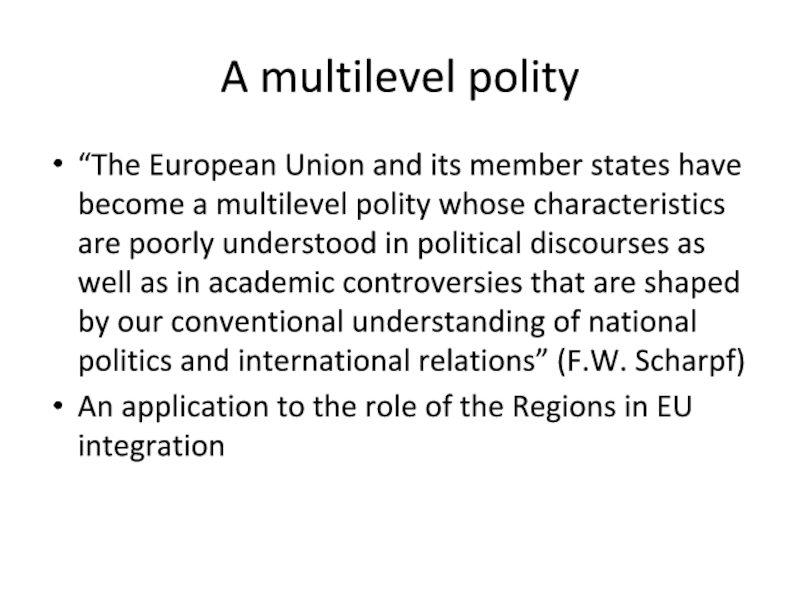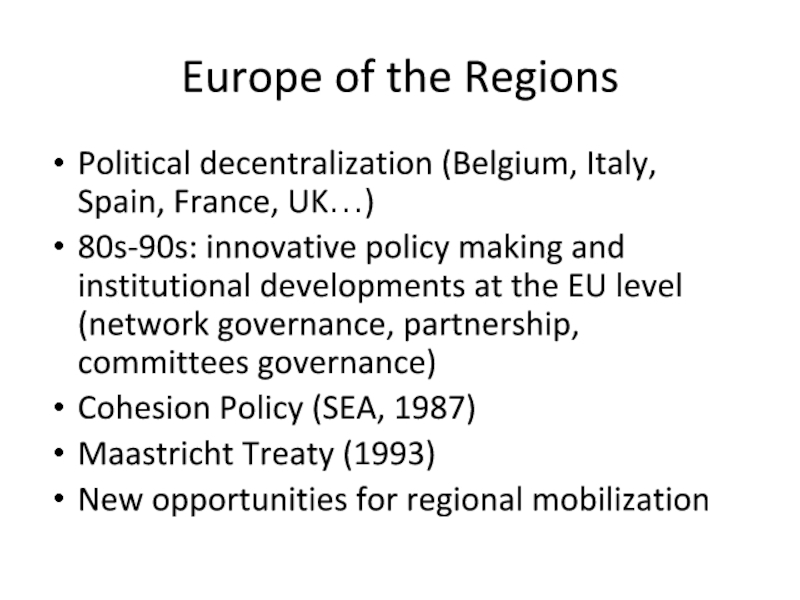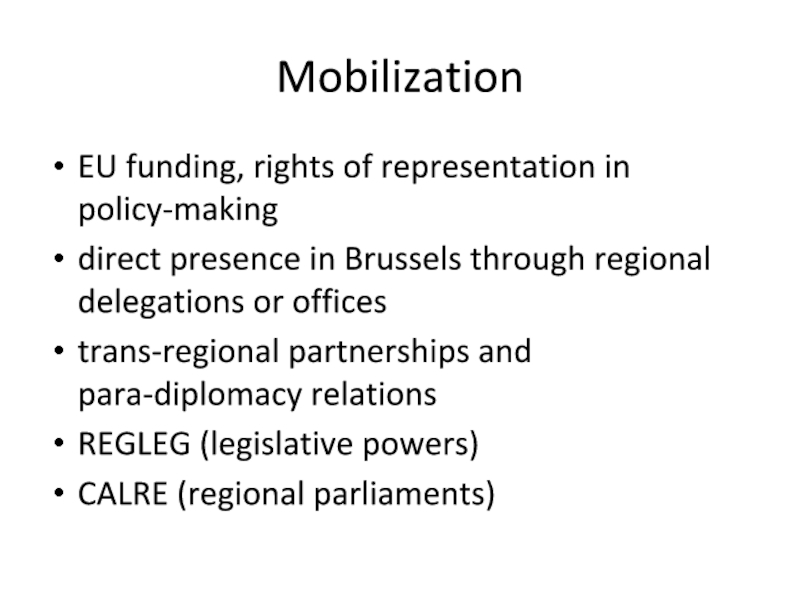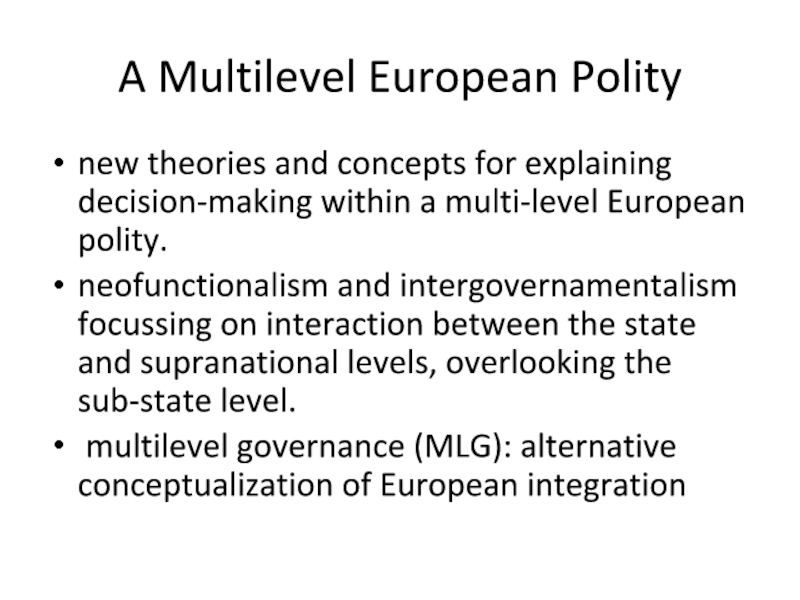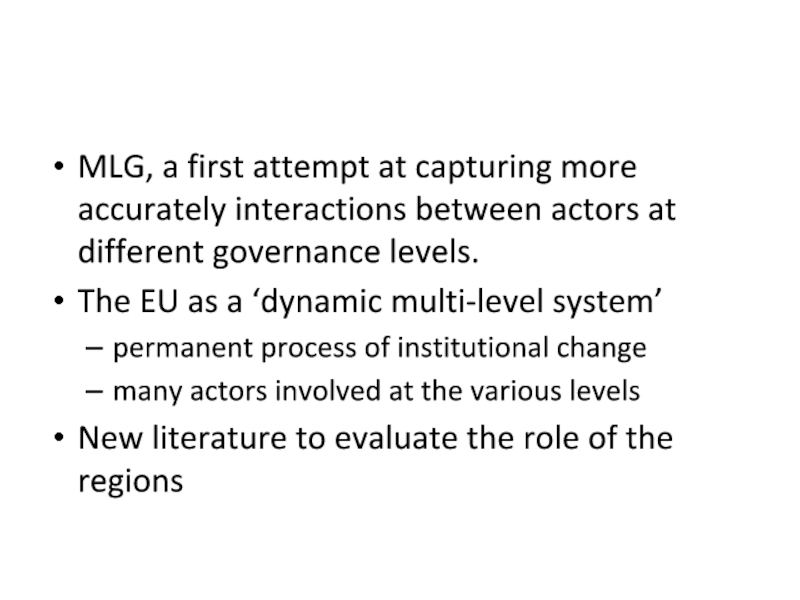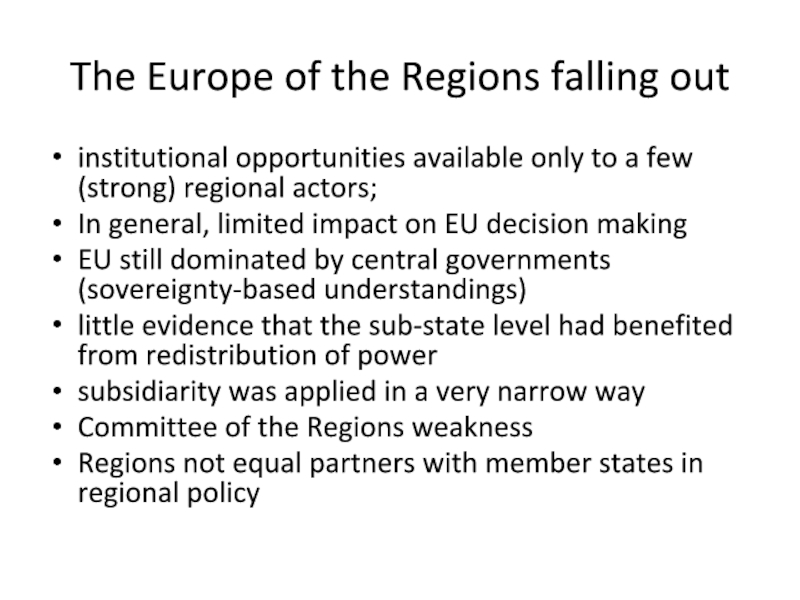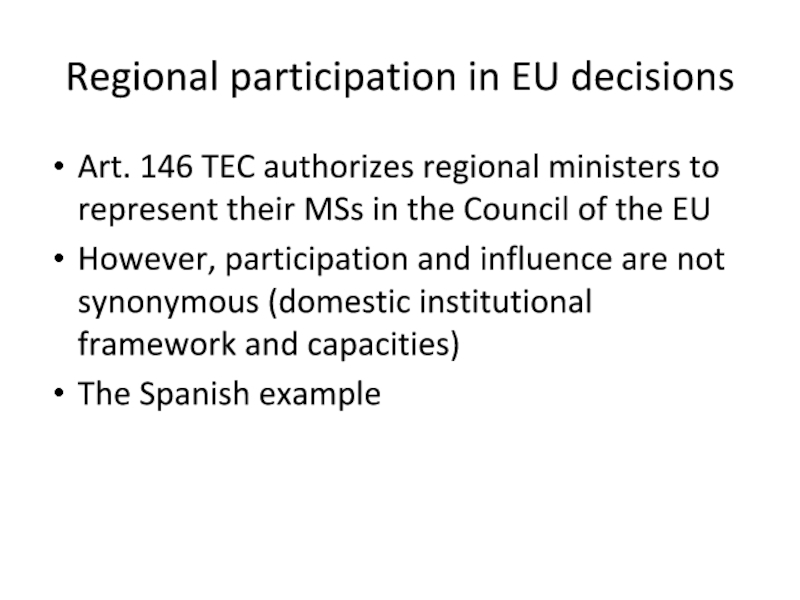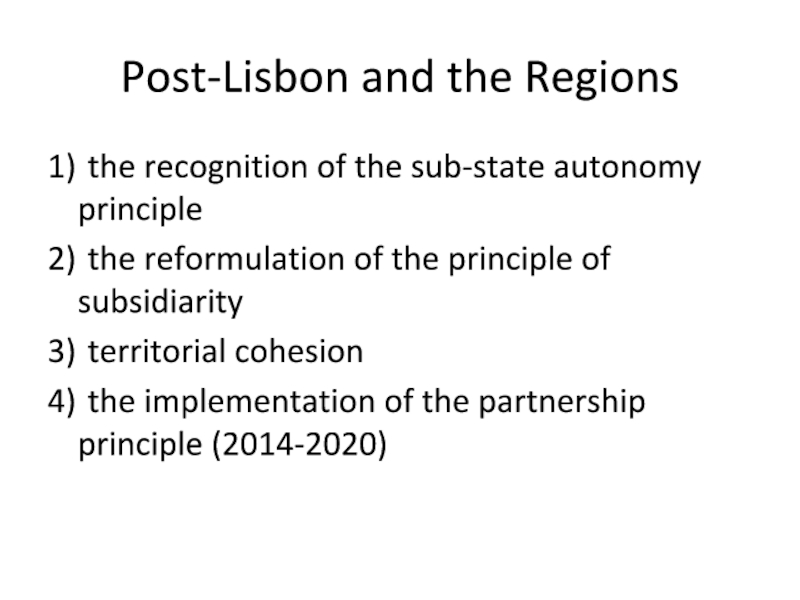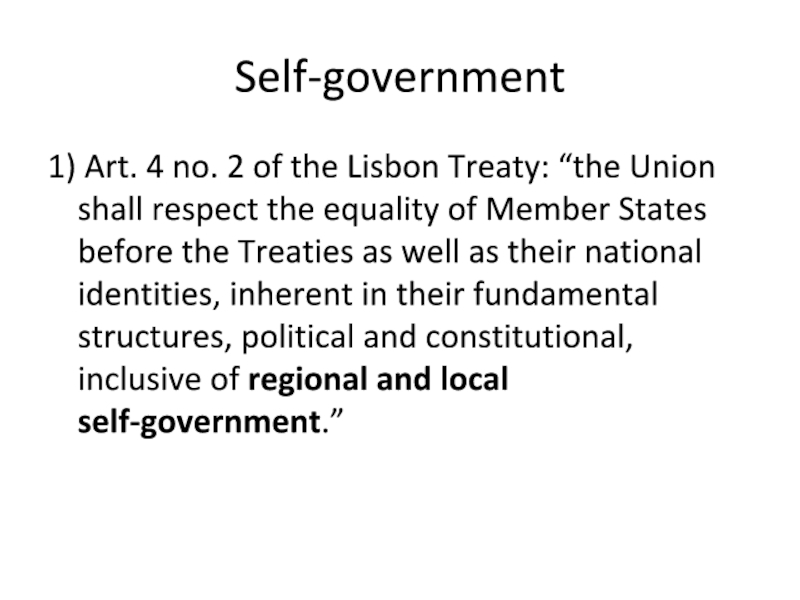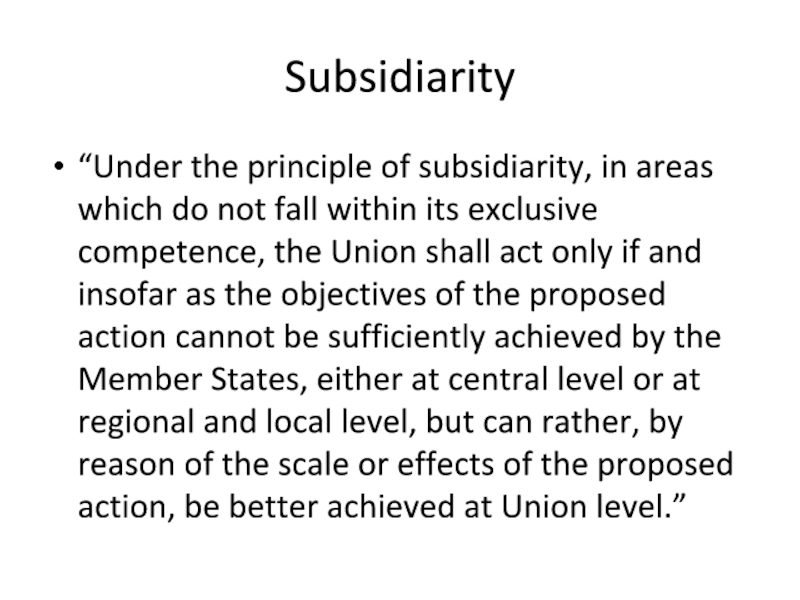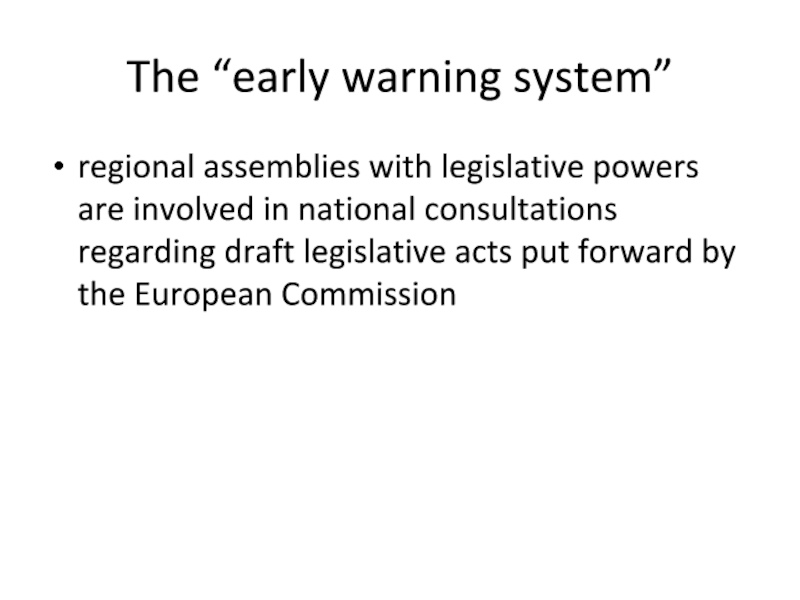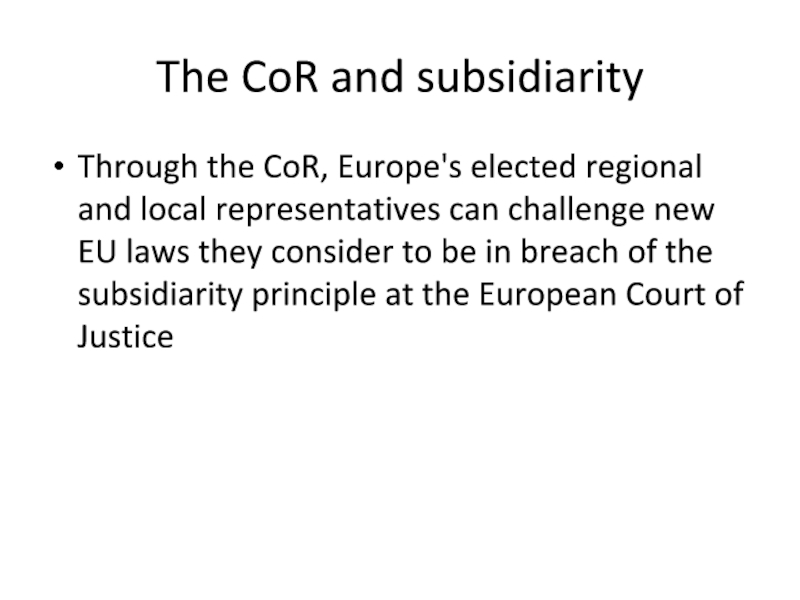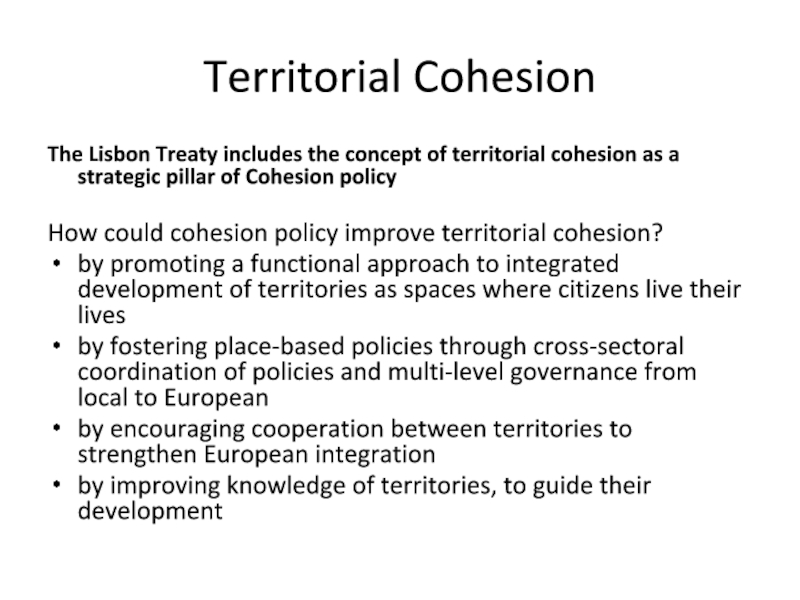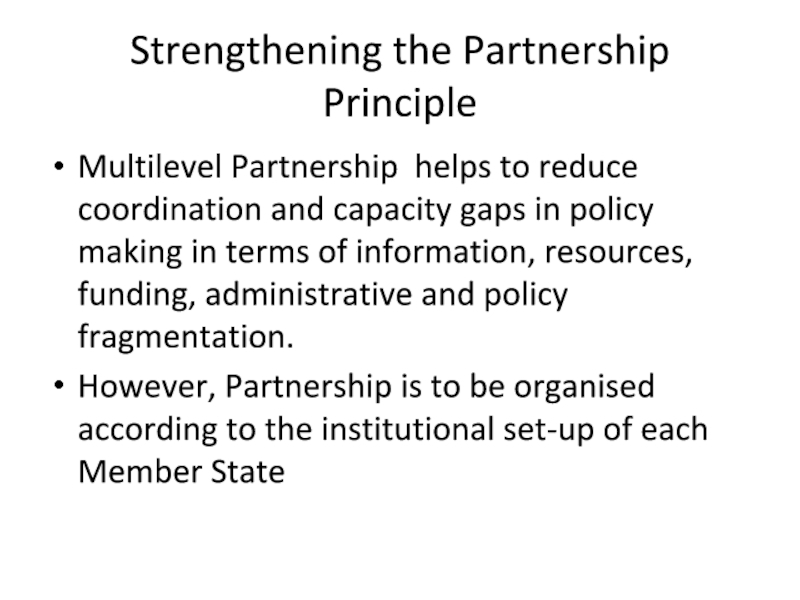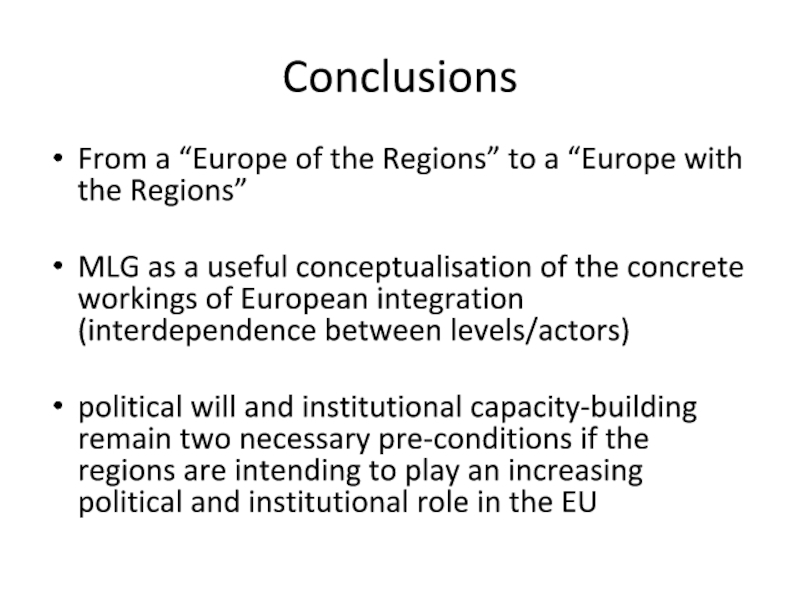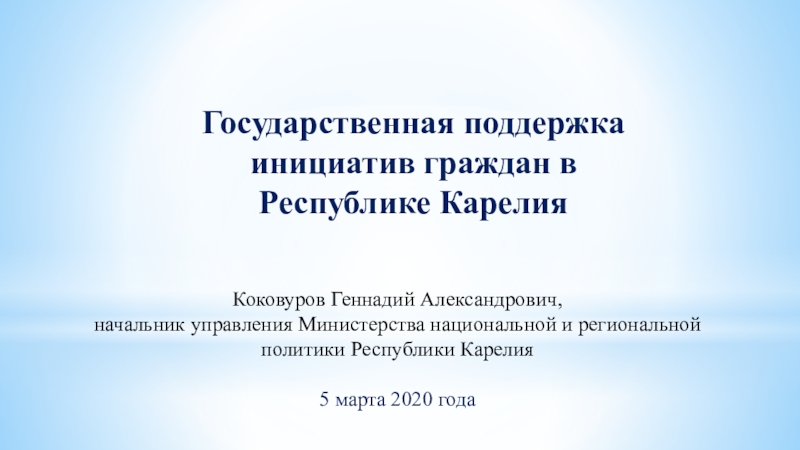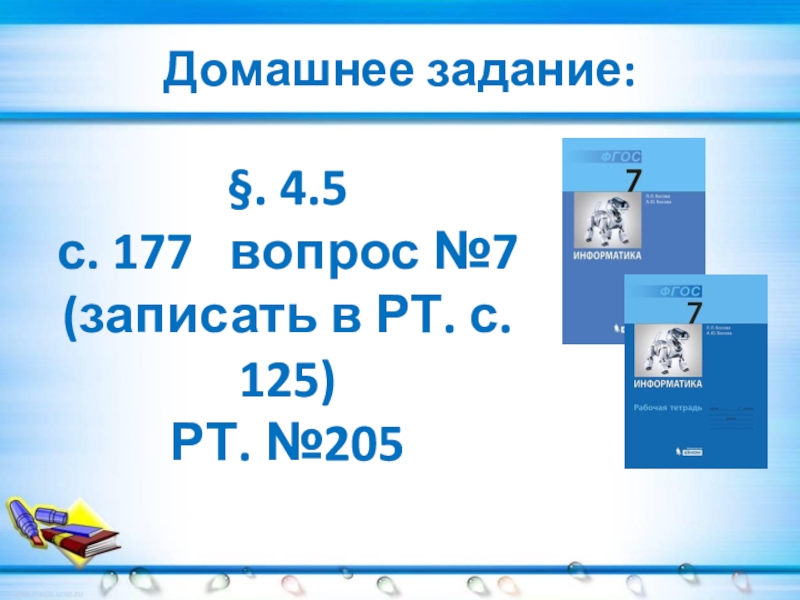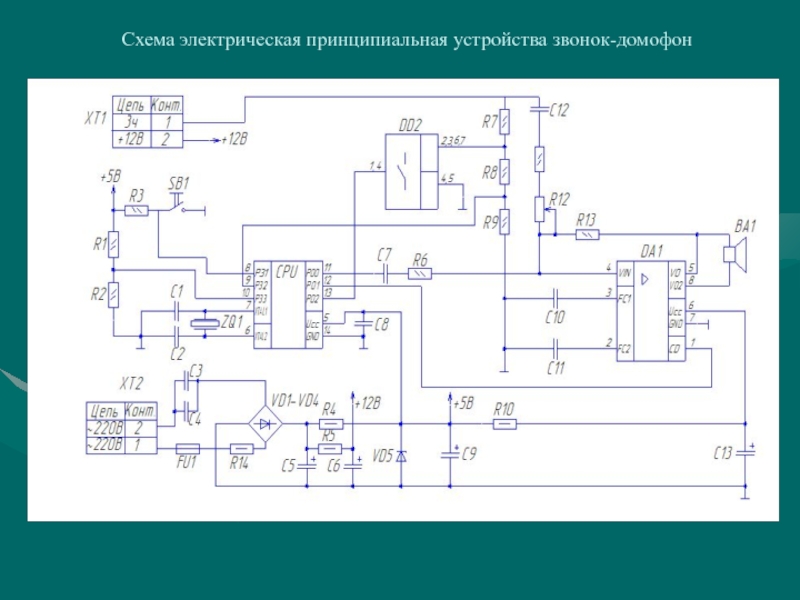Разделы презентаций
- Разное
- Английский язык
- Астрономия
- Алгебра
- Биология
- География
- Геометрия
- Детские презентации
- Информатика
- История
- Литература
- Математика
- Медицина
- Менеджмент
- Музыка
- МХК
- Немецкий язык
- ОБЖ
- Обществознание
- Окружающий мир
- Педагогика
- Русский язык
- Технология
- Физика
- Философия
- Химия
- Шаблоны, картинки для презентаций
- Экология
- Экономика
- Юриспруденция
Multilevel Governance in the EU From the “Europe of the Regions” to the “Europe
Содержание
- 1. Multilevel Governance in the EU From the “Europe of the Regions” to the “Europe
- 2. A multilevel polity“The European Union and its
- 3. Europe of the RegionsPolitical decentralization (Belgium, Italy,
- 4. MobilizationEU funding, rights of representation in policy-makingdirect
- 5. A Multilevel European Politynew theories and concepts
- 6. MLG, a first attempt at capturing more
- 7. The Europe of the Regions falling outinstitutional
- 8. Regional participation in EU decisionsArt. 146 TEC
- 9. Post-Lisbon and the Regions1) the recognition of the
- 10. Self-government1) Art. 4 no. 2 of the
- 11. Subsidiarity“Under the principle of subsidiarity, in areas
- 12. The “early warning system”regional assemblies with legislative
- 13. The CoR and subsidiarityThrough the CoR, Europe's
- 14. Territorial CohesionThe Lisbon Treaty includes the concept
- 15. Strengthening the Partnership PrincipleMultilevel Partnership helps to
- 16. ConclusionsFrom a “Europe of the Regions” to
- 17. Скачать презентанцию
A multilevel polity“The European Union and its member states have become a multilevel polity whose characteristics are poorly understood in political discourses as well as in academic controversies that are shaped
Слайды и текст этой презентации
Слайд 1 Multilevel Governance in the EU From the “Europe of the Regions”
to the “Europe with the Regions”
Слайд 2A multilevel polity
“The European Union and its member states have
become a multilevel polity whose characteristics are poorly understood in
political discourses as well as in academic controversies that are shaped by our conventional understanding of national politics and international relations” (F.W. Scharpf)An application to the role of the Regions in EU integration
Слайд 3Europe of the Regions
Political decentralization (Belgium, Italy, Spain, France, UK…)
80s-90s:
innovative policy making and institutional developments at the EU level
(network governance, partnership, committees governance)Cohesion Policy (SEA, 1987)
Maastricht Treaty (1993)
New opportunities for regional mobilization
Слайд 4Mobilization
EU funding, rights of representation in policy-making
direct presence in Brussels
through regional delegations or offices
trans-regional partnerships and para-diplomacy relations
REGLEG
(legislative powers)CALRE (regional parliaments)
Слайд 5A Multilevel European Polity
new theories and concepts for explaining decision-making
within a multi-level European polity.
neofunctionalism and intergovernamentalism focussing on interaction
between the state and supranational levels, overlooking the sub-state level.multilevel governance (MLG): alternative conceptualization of European integration
Слайд 6MLG, a first attempt at capturing more accurately interactions between
actors at different governance levels.
The EU as a ‘dynamic
multi-level system’permanent process of institutional change
many actors involved at the various levels
New literature to evaluate the role of the regions
Слайд 7The Europe of the Regions falling out
institutional opportunities available only
to a few (strong) regional actors;
In general, limited impact on
EU decision makingEU still dominated by central governments (sovereignty-based understandings)
little evidence that the sub-state level had benefited from redistribution of power
subsidiarity was applied in a very narrow way
Committee of the Regions weakness
Regions not equal partners with member states in regional policy
Слайд 8Regional participation in EU decisions
Art. 146 TEC authorizes regional ministers
to represent their MSs in the Council of the EU
However, participation and influence are not synonymous (domestic institutional framework and capacities)
The Spanish example
Слайд 9Post-Lisbon and the Regions
1) the recognition of the sub-state autonomy principle
2) the
reformulation of the principle of subsidiarity
3) territorial cohesion
4) the implementation of the
partnership principle (2014-2020)Слайд 10Self-government
1) Art. 4 no. 2 of the Lisbon Treaty: “the
Union shall respect the equality of Member States before the
Treaties as well as their national identities, inherent in their fundamental structures, political and constitutional, inclusive of regional and local self-government.”Слайд 11Subsidiarity
“Under the principle of subsidiarity, in areas which do not
fall within its exclusive competence, the Union shall act only
if and insofar as the objectives of the proposed action cannot be sufficiently achieved by the Member States, either at central level or at regional and local level, but can rather, by reason of the scale or effects of the proposed action, be better achieved at Union level.”Слайд 12The “early warning system”
regional assemblies with legislative powers are involved
in national consultations regarding draft legislative acts put forward by
the European CommissionСлайд 13The CoR and subsidiarity
Through the CoR, Europe's elected regional and
local representatives can challenge new EU laws they consider to
be in breach of the subsidiarity principle at the European Court of JusticeСлайд 14Territorial Cohesion
The Lisbon Treaty includes the concept of territorial cohesion
as a strategic pillar of Cohesion policy
How could cohesion policy
improve territorial cohesion?by promoting a functional approach to integrated development of territories as spaces where citizens live their lives
by fostering place-based policies through cross-sectoral coordination of policies and multi-level governance from local to European
by encouraging cooperation between territories to strengthen European integration
by improving knowledge of territories, to guide their development
Слайд 15Strengthening the Partnership Principle
Multilevel Partnership helps to reduce coordination and
capacity gaps in policy making in terms of information, resources,
funding, administrative and policy fragmentation.However, Partnership is to be organised according to the institutional set-up of each Member State
Слайд 16Conclusions
From a “Europe of the Regions” to a “Europe with
the Regions”
MLG as a useful conceptualisation of the concrete workings
of European integration (interdependence between levels/actors)political will and institutional capacity-building remain two necessary pre-conditions if the regions are intending to play an increasing political and institutional role in the EU

